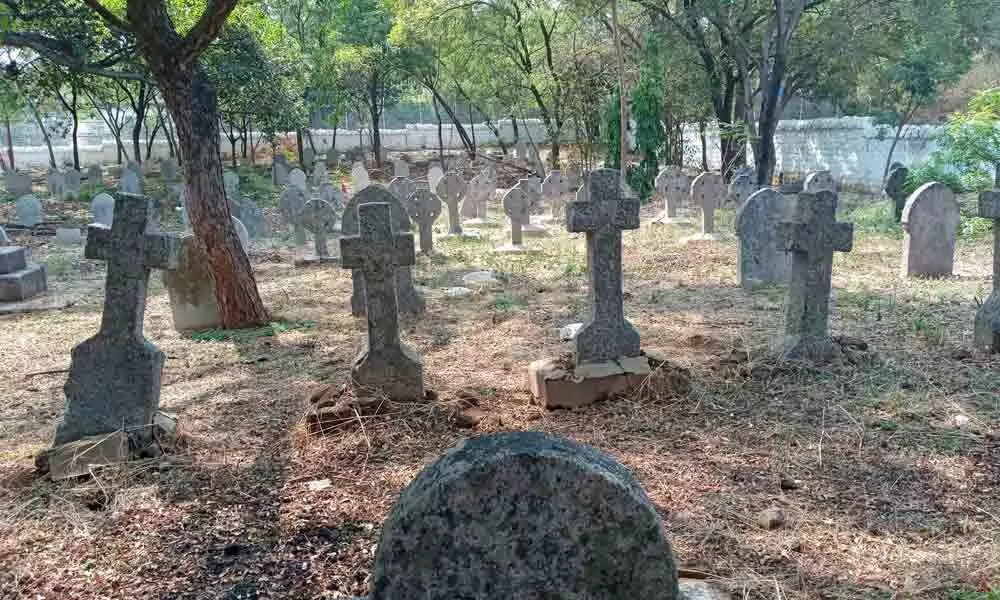Live
- Representatives of VIDASAM demand resignation of YSRCP MLAs
- Police grill BRS leader Jaipal Yadav
- Revanth sells 6Gs to woo voters in Maharashtra
- Cong govt striking balance between welfare, devpt
- OU students stage protest over food poisoning
- Cops sexually assaulted women in Lagacharla, alleges Rathod
- Flight services up from Vijayawada, Vizag airports
- Kishan Reddy has not brought a single rupee for TG from Centre: Ponnam
- Manipur on edge
- Girl student jumps to death from 4th floor of hostel
Just In

Deaths due to cholera, dysentery, plague, smallpox, sun stroke, typhoid, jungle fever and other scourges are not new to the city, more so Secunderabad.
Secunderabad: Deaths due to cholera, dysentery, plague, smallpox, sun stroke, typhoid, jungle fever and other scourges are not new to the city, more so Secunderabad.
Ample evidence is found in the British cemeteries where one can find graves of British and Indian soldiers. There are several graves dating to 1848 at the Mount of Olives Society cemetery at Sainikpuri. One can deduce that there must have been an epidemic at that point of time.
Peter Wycliffe, Secretary, Mount of Olives Society, says, "There are 21 war graves at the cemetery. My father VAJ Wycliffe was a British Indian soldier who also went to Iran and Iraq.
When the British left, he took permission from the Queen of England and the Indian government for the upkeep of the cemetery."
The grave inscriptions offer a striking picture of life frequently cut short. Most of them died young, aged 20-35 years, and there are a few graves of children aged just three.
In 1820, the cholera pandemic began in Bengal and spread across India. Thousands of Indians including British troops died and many who were serving in Bolarum succumbed to it.
Major Rajan (Retd), a resident of Marredpally, says, "The Spanish flu in 1916 killed millions. Small pox too took a toll and people with dysentery too died in hundreds."
According to folklore, the Ujjaini Mahankali Temple near Rathifile Bus Stop is believed to have come up after one Appaiah who was part of the military battalion, on returning from a posting in Ujjain, installed an idol made of wood in 1814 as a tribute to the goddess and prayed for the safety of people from the epidemic.
Most of the British and the Indian soldiers were buried in the four cemeteries, namely: St John's Cemetery in Parade Grounds; Graveyards No 5 and No 12 at Trimulgherry; and Mount of Olives cemetery at Sainikpuri.
Four major influenza epidemics were recorded between 1830 and 1848, claiming about 15 million lives.

© 2024 Hyderabad Media House Limited/The Hans India. All rights reserved. Powered by hocalwire.com







